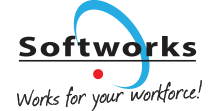A hospital worker in Italy made the news recently when charges were brought against him for allegedly failing to show up to work despite receiving full pay since 2005. Dubbed the “king of absentees” by the Italian press, he’s said to have broken the national record by allegedly skipping work for 15 years. It’s thought he received a total of €538,000 over the past 15 years – despite not completing his role.
According to a police report, the man allegedly threatened the hospital director, who was his manager, in order to prevent her from filing a report about his absenteeism in 2005. It’s thought that, after the director’s retirement, no other member of the Human Resources department at the hospital checked his attendance or noticed his absence. This allowed the employee to continue to skip work without facing repercussions. Six managers are also being investigated on suspicion of having played a role in enabling his alleged absenteeism. Now aged 67 he is facing a variety of charges including extortion, forgery and abuse of office.
While this story is an extreme example, it does illustrate that a lack of checks and balances can allow a problem to escalate and have a larger effect across the entire organisation. Employees who are persistently absent can have a very negative impact on other employees’ morale, not to mention the direct and indirect costs associated with the person not performing the job they’ve been employed to do. In this article, we look at what absenteeism is as well as some of the key ways to try to measure and control it.
What is absenteeism?
Absenteeism is when an employee takes repeated and unplanned absences from work over an extended period of time for no reason. While genuine absences, for illness or personal issues, will always happen, keeping unnecessary absences to a minimum is key to an organisation’s success.
Tips to reduce absenteeism
1. Record keeping
The fundamental building block of any effective absence control programme is the availability of complete, accurate and timely information on Time and Attendance. Good records are vital to grasp the extent of the problem. 25% of all organisations don’t bother to keep absence statistics and as many as 75% of organisations don’t understand the cost of absence to their organisation. It’s vital to monitor employee sickness and absence records for frequency and patterns.
2. Return to work interview
Interviewing employees when they return to work after an absence helps reinforce a good attendance record. It’s an effective way of managing short-term absences but bears in mind that a badly conducted return-to-work interview is worse than none at all. It should be used as a forum for discussing possible preventative solutions, for instance, if the employee suffers from back pain, working conditions could be adapted. The return-to-work interview can be used to clarify the impact of individual absence on colleagues, thereby underscoring the value of that employee. This can combat the sickness culture of many organisations, where staff perceive a sickness quota and take leave accordingly.
3. The Bradford Factor
For many organisations, the cost and disruption of persistent, short spells of absence are greater than for occasional, longer periods of absence. “The Bradford Factor” points system has been shown to have a very significant effect in reducing sickness absence. This formula measures the number of incidences of absence and the duration of each absence to compute an absence score, in points, for each employee. This reflects whether the overall absenteeism rate is caused by a few employees suffering from long-term ill health, or a substantial number of employees being frequently absent for relatively short spells.
The Bradford Factor calculation is worked out for each individual employee and can be reasonably complicated to work out but a Workforce Management system can automatically calculate each employee’s Bradford Factor points score for you.
4. Flexible working
Employees are less likely to resort to unauthorised absences if they can fit their working lives around commitments such as childcare, senior care or studying. Flexible working options empower employees to manage these external demands in a proactive manner resulting in a reduction in unexplained absences. Workforce Management systems can help organisations easily manage Flexitime and flexible working solutions like Annualised Hours so it’s possible to offer these benefits to employees without the corresponding large administrative burden.
5. Workforce Management
Workforce Management software can help organisations manage absenteeism by providing one central system for all employee Time and Attendance data across teams and locations. Good Time and Attendance functionality will help you monitor hours worked (recorded by honour-based timesheets or clocking system) as well as absences by absence type. Depending on your requirements you can choose Biometric Clocking to add an extra layer of security and accountability for Access Control and/or Clocking.
Softworks Workforce Management software includes a complete suite of Reports and Dashboards giving you a clear picture of attendance trends, employee hours, absence severity; frequency, concentration, and patterns. As the information is available in an easy-to-read format it allows you to proactively spot trends before they become a larger problem. The Softworks Alerter module can automatically alert supervisors via email or on-screen exception reports of any potential problem employees or departments before the issue escalates.
6. Improve scheduling
Absenteeism in organisations where employees work on a roster or schedule basis can be high if employees’ preferences are routinely ignored when creating a schedule, or if employees perceive a lack of fairness in the allocation of shifts over weekends or public holidays.
The Employee Scheduling feature in Softworks Workforce Management software is carefully configured to reflect the unique requirements of each organisation and automatically takes employee availability, skills and fairness rules into account in the roster creation. As this takes the complex administrative work out of scheduling, schedules can be created weeks in advance instead of at the last minute, allowing employees more control over their working lives and less reason to announce an unexpected absence.
7. Employee self-service
Employee Self-Service software allows employees to record their working time, check work schedules, request leave, view Flexitime and leave balances and update personal information on desktop, laptop, smartphone or tablet and is a key feature of Softworks Workforce Management Software.
Giving employees easy and immediate access to their information such as schedules and leave and flexitime balances gives them more control over their working lives and this in turn creates a culture of motivated and empowered employees which has a positive impact on absenteeism levels.
Summing up
A Workforce Management system like Softworks is the best tool to provide the information you need to monitor and measure employee absenteeism. However, to effectively manage absenteeism in your organisation it’s important to engage with employees and look at the factors that affect their working experiences such as work-life balance and personal and health-related issues. Good people management skills in combination with the management information provided by your Workforce Management system are the best way to improve employee engagement and reduce absenteeism in your organisation.
To find out how Softworks can help you manage your workforce effectively, get in touch to book a Demo today.








